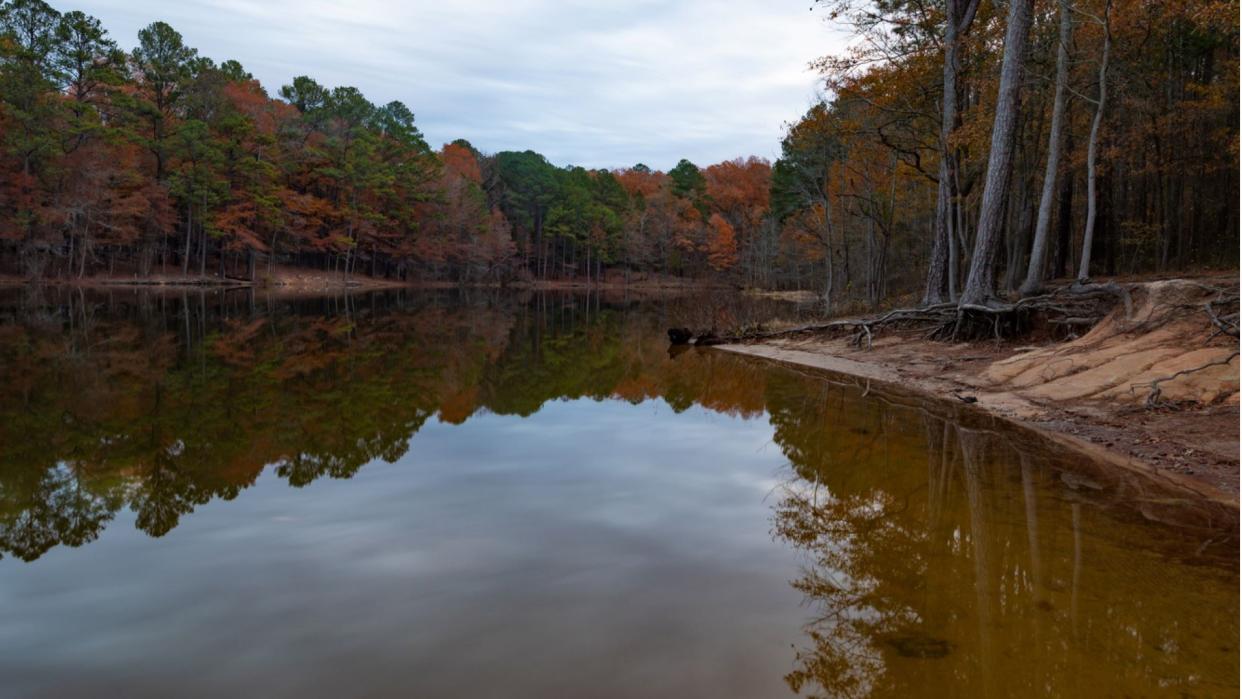Unusually low reservoir levels reveal remnants of submerged town from 1980s: 'For years, these ruins have been virtually invisible'

The remnants of small, rural towns rose from the depths of North Carolina's Jordan Lake late last year.
What happened?
Drought led to the reservoir's "unusually low levels," Raleigh-based WRAL News reported.
"For years, these ruins have been virtually invisible, but lower water levels recently revealed dozens of artifacts, lost roadways, underwater train tracks and even foundations from the old farm houses that once utilized the rich farmland now lost beneath the lake," the outlet stated.
In November, the phenomenon attracted visitors who wanted to catch glimpses of the former towns of Seaforth, Pea Ridge, Farrington, and Friendship, which once stood in the New Hope River Valley. The area consisted of a country road and "modest" farmhouses near train tracks that run parallel to what is now Highway 64, WRAL reported. Indigenous tribes, including the Tuscarora, had lived there for 10,000 years.
WRAL described the New Hope River as a "major obstacle" that was "extremely dangerous" for European settlers in the 1600s. It divided the state, making trade "perilous and expensive."
The valley's propensity to flood, a 1930s Army Corps of Engineers survey, and a 1945 hurricane led U.S. Senator B. Everett Jordan in 1963 to fund the creation of a dam and reservoir. It was completed in 1982, displacing 2,000 people and covering 15 cemeteries.
Why is this concerning?
Low lake levels are becoming commonplace not only in the United States but around the world as well. A similar uncovering happened outside of San Antonio last year, and the size of west-central Africa's Lake Chad has decreased by 90% since the 1960s.
These are just a few examples, and the level of concern is proportionate to the importance of the body of water. Lakes are often vital to communities, providing sustenance, livelihoods, and habitat for wildlife. Peru and Bolivia's Lake Titicaca, for example, is home to the Indigenous Uros, and three million people rely on the lake to make a living.
Seven million people are at risk of famine because of Lake Chad's demise, and 500,000 children are suffering from severe acute malnutrition.
What can be done?
Lakes do bounce back, but they can fail too, of course. Lake Powell and Lake Mead in the Western U.S. reached near-catastrophic levels recently and will require strict management to avoid a dead pool.
Dam removal projects can also work wonders to restore rivers, as is happening in California with the Klamath.
Officials can also step in before such undertakings alter natural ecosystems and uproot the people who choose to live there despite the risks. WRAL reported that an editorial published in The News & Observer in the '60s argued the government had underpaid residents to move.
It stated: "The property in the New Hope Valley is wonderfully located — in a triangle of rapidly growing towns and cities — Chapel Hill, Durham and Raleigh — and this property is destined to become very valuable.
"I venture to say within 20 years, much of this property will be worth to its owners from $1,000 to $10,000 an acre, with a total value of $60 million."
Join our free newsletter for cool news and cool tips that make it easy to help yourself while helping the planet.

